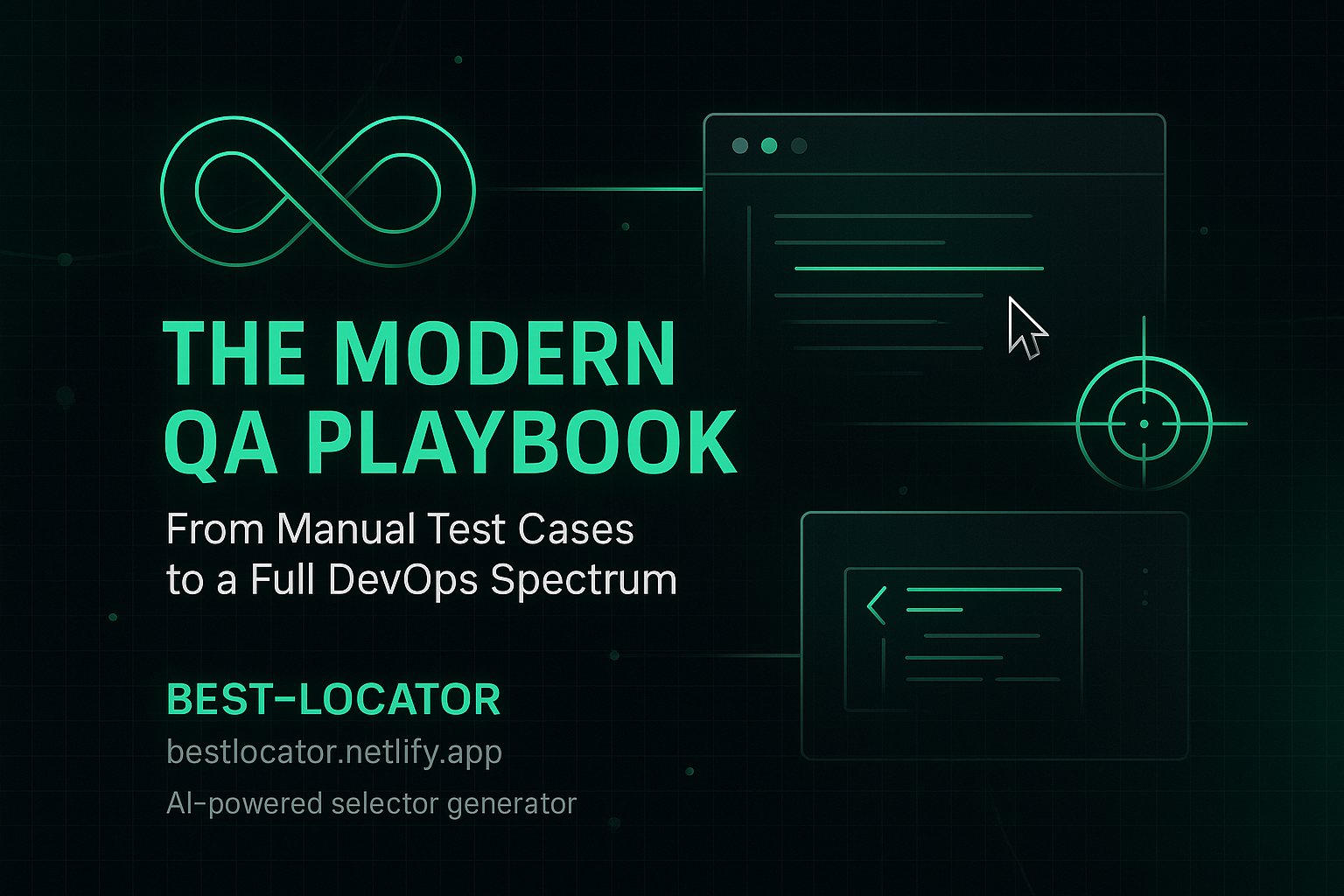The world of software development is constantly evolving, and the role of Quality Assurance has transformed along with it. Gone are the days when testing was a separate phase at the end of a long development cycle. In today's fast-paced Agile and DevOps environments, QA is an integrated, continuous, and multi-faceted discipline.
To succeed, a modern QA professional must master a wide spectrum of testing types, methodologies, and tools. Let's explore this modern playbook, from the foundational concepts to the specialized tools that bring it all to life.
The Foundation: Verification and the Test Plan
Every solid testing effort begins not with code, but with a plan. The Testplan is our strategic document, outlining the scope, objectives, resources, and schedule for testing. It's the blueprint for quality.
This blueprint is broken down into tactical, step-by-step instructions called a Testcase. Each Testcase describes a specific action and its expected outcome. The process of executing these test cases to ensure the software meets its specifications is known as Verification—answering the crucial question, "Are we building the product right?"
The Core: Functional Validation
At the heart of QA lies Functional testing. This is where we confirm that the application actually does what it's supposed to do. Does the login button work? Does the shopping cart calculate the total correctly?
This Validation—answering "Are we building the right product?"—can be performed in two ways:
Testing Approaches
Manual Testing: A human tester meticulously follows the steps in a Testcase, using their intuition and experience to explore the application.
Automated Testing: An engineer writes a Script that executes the test case automatically. This is where the real power of modern QA lies. For unit and integration tests on the backend, frameworks like JUnit and TestNG have been the industry standard for years in the Java ecosystem.
When either a manual or automated test fails to produce the expected outcome, a Defect is reported, kicking off the bug-fixing lifecycle.
Expanding the Scope: Non-Functional Testing
A modern QA strategy goes far beyond basic functionality. We must also test the crucial, user-facing aspects that fall under the umbrella of Nonfunctional testing. This includes:
- Performance Testing: How does the application behave under load? Tools like JMeter and the enterprise-grade LoadRunner are essential for simulating user traffic and identifying bottlenecks.
- Security Testing: Are there vulnerabilities that could be exploited? This involves looking for common issues like XSS, SQL injection, and improper authentication.
- Usability Testing: Is the application intuitive and easy to use? This often involves observing real users to see where they struggle.
The Modern QA Toolchain
To cover this wide spectrum, a QA engineer needs a diverse toolbelt. Beyond the backend and performance tools, two other areas are critical:
Essential Testing Tools
API Testing: Before a feature even has a UI, its API must be tested. Postman is the undisputed king for this, allowing for easy creation and execution of API requests for Validation.
Mobile Testing: For mobile applications, Appium has become the go-to open-source tool for writing a single Script that can test both iOS and Android apps.
The Unifying Force: Regression in a DevOps World
How do all these pieces fit together? In an Agile world, developers are constantly shipping new code, and our biggest fear is that a new feature will break something that used to work. This is where Regression testing comes in.
A Regression suite is a large collection of automated test cases that runs every time new code is checked in. It's our safety net. In a true DevOps culture, this automated suite is a core part of the CI/CD pipeline, providing instant feedback and ensuring that no Defect makes it to production.
From a foundational Testplan to a fully integrated DevOps pipeline, the modern QA professional orchestrates a complex but powerful process. By mastering both Manual intuition and the power of a diverse automation Script toolchain, we ensure that quality is not just a final check, but a continuous part of the software development lifecycle.
The evolution from traditional testing to modern QA represents more than just a change in tools—it's a fundamental shift in how we think about quality. In this new paradigm, quality assurance isn't just about finding bugs; it's about building confidence, enabling rapid deployment, and ensuring that software truly serves its users.
As we continue to push the boundaries of what's possible in software development, the role of QA will only become more critical. The teams that master this modern playbook will be the ones that deliver exceptional user experiences while maintaining the speed and agility that today's market demands.
